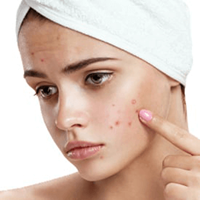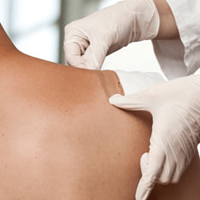About Moles
Moles and other birthmarks are benign, pigmented spots or patches of skin that range in color. They can be tan, brown, and black (moles) or red, pink, or purple (vascular lesions, such as strawberry hemangiomas or port wine stains). Though most moles and birthmarks are not dangerous, they can sometimes develop into cancer. Many patients also choose to have benign moles removed for aesthetic reasons. At Pacific Skin and Cosmetic Dermatology San Francisco & Marin, we offer routine mole checks performed by board-certified dermatologist Tracy Evans, as well as by dermatological physician's assistants. A mole is a growth on the skin that results from a cluster of pigmented cells, and they are quite common. Virtually everyone has at least one mole. During mole checks, we examine, measure, and document the size, shape, and growth of moles on the body. This allows us to evaluate any risk and monitor any changes. If you have noticed a new or unusual mole or any changes in an existing mole, it is very important to have it examined by a dermatologist.
Moles Reviews
Causes
Moles occur when certain skin cells, called melanocytes, grow in a clump instead of being distributed evenly under the skin. These clumps cause the dark-colored spots and bumps called moles because melanocytes are what produce your skin's melanin (pigment). Moles may appear or darken at any time but are most common after exposure to the sun, during the teen years, and during pregnancy.
Symptoms
Moles (also called nevi) that exhibit any of the following warning signs should be examined by a dermatologist immediately:
- Diameter larger than six millimeters
- Itching or bleeding
- Any changes in color, size, or shape
- Has multiple colors
- Asymmetrical shape
- Irregular or scalloped borders
Dr. Evans recommends that patients get mole checks on a regular basis, especially for moles located where they can't be easily monitored, such as on the scalp.
Treatment Options
Most moles don't warrant treatment unless they become suspicious, cancerous, or if they cause discomfort or cosmetic issues. In these situations, Dr. Evans may need to remove the mole(s). There are several different methods for removing moles, depending on their depth, location, and color, as well as the patient's skin type, age, and other factors. Removal procedures can include surgical excision, surgical "shaving," laser removal, pulsed light therapy, and microdermabrasion.
Most of these procedures can be done in less than an hour under local anesthesia and have successful, aesthetically pleasing results. We usually ask our patients to return to our San Francisco, CA location for at least one follow-up visit so we can monitor the area and your healing progress. Your treatment area should be completely healed in about two weeks; however, this can vary a bit, depending on the removal method. You'll be given simple but important after-care instructions to follow in order to help the wound heal nicely.
Schedule Your Mole Check!
Even when moles are not a medical problem, it is very common for men and women of all ages to wish to have them removed. They can cause self-consciousness or discomfort under clothing. However, if you are concerned about your mole(s), having a dermatologist examine your skin can save you undue worry or catch a problem early. Learn more about mole and lesion removal at Pacific Skin and Cosmetic Dermatology San Francisco & Marin to eliminate unwanted skin growths from your face and body.




